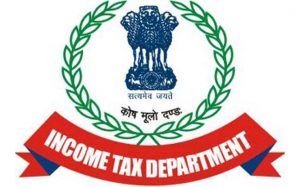CBDT’s e-Verification Scheme harnesses information technology to facilitate voluntary compliance

On a pilot basis information of financial transactions pertaining to 68,000 cases from FY 2019-20 taken up for e-Verification
e-Verification completed in approximately 35,000 cases out of 68,000 cases in the above pilot study
The Income Tax Department has taken several progressive steps to encourage voluntary tax compliance and facilitate a transparent and non-intrusive tax administration. One such major initiative is the e-Verification Scheme, 2021 (the “Scheme”) which was notified on 13th December, 2021.
Using information technology effectively, the Scheme aims to share and verify such financial transaction information with the taxpayer which appears to be either unreported or under-reported in the Income Tax Return (ITR) filed by the taxpayer.
The Department has been collecting information of financial transactions from multiple sources. Earlier, a part of it was shared with the taxpayer in the 26AS Statement. However, with a view to effectively utilize the data collected from various sources, the entire information is now displayed to the taxpayer through the Annual Information Statement (AIS). The AIS provides a facility to the taxpayer to object to any information if the Source has misreported any such information. The Department confirms the said information with the Source and if the Source states that there is no error, the said information is subjected to risk assessment for e-Verification.
The entire process of e-Verification is digital, with notices issued electronically and responses by the taxpayers also submitted electronically. On completion of the enquiry, a verification report is prepared electronically without any physical interface with the taxpayer.
The Scheme is extremely beneficial to taxpayers as it enables the taxpayer to explain the financial transaction with evidence. It also helps in data correction/cleaning and thereby prevents initiation of proceedings on misreported information. Further, since the information pertaining to the financial transactions is shared with the taxpayer, it provides an opportunity to correct /update income that may not have been appropriately reported in the ITR filed by the taxpayer. In other words, as the e-Verification Scheme makes the taxpayer aware of the risks, it nudges him/her towards voluntary compliance by providing an opportunity to the taxpayer to Update the return of income under section 139(8A) of the Income-tax Act,1961.
On a pilot basis, in about 68,000 cases, information of financial transactions pertaining to FY 2019-20 has been taken up for e-Verification. Details of the transactions have been initially shared with the individual taxpayer through e-campaign. So far, e-Verification has been completed by the designated Directorate in approximately 35,000 cases and remaining are under verification.
As the Scheme has provided an opportunity to the taxpayers to accept the mismatch of information vis-à-vis the original ITR filed, it is found that many taxpayers have filed Updated ITRs.
To facilitate a better understanding of the Scheme and the various processes involved therein, the FAQs on e-Verification Scheme, 2021 are available on www. incometaxindia.gov.
To read the Press Release CLICK ME.